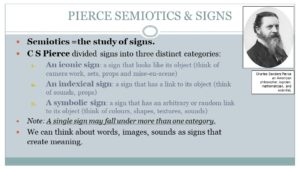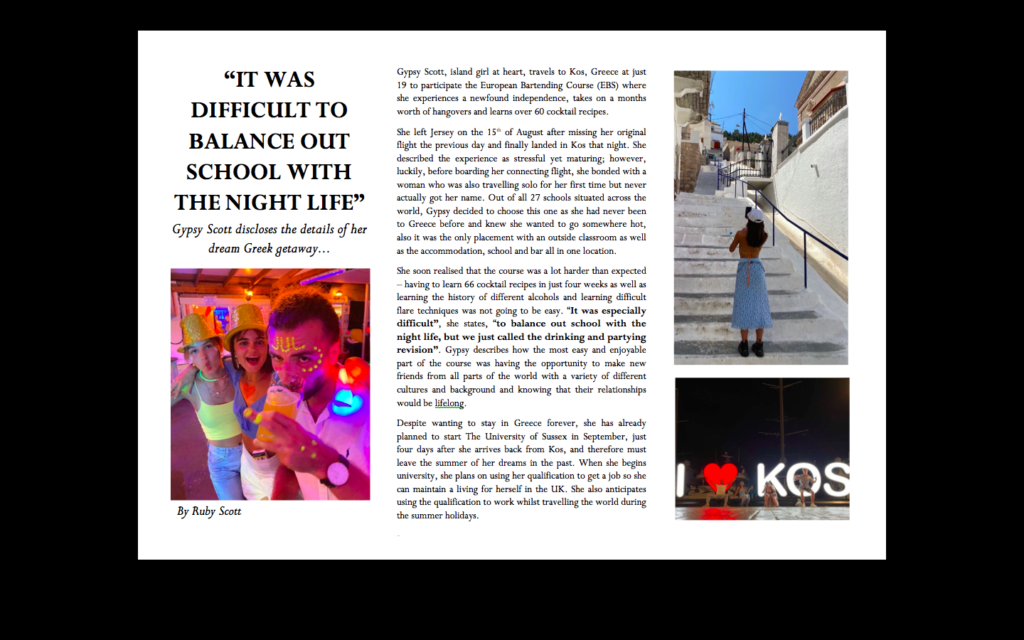
Masthead




On your Header / Banner post provide 3 examples / illustrations of indexical, iconic and symbolic signs.
this link may help you to understand the distinction between syntagm and paradigm, but please do not worry about it! It is very confusing, highly specific and your understanding will develop over time.
You need to know all of these words for your exam as you will get tested on any number of them as a short answer question -usually question 1 in Media Paper 1. So please look them up and define them in a new post on your blog. THERE ARE 19 TERMS TO DEFINE.

In my summer task, my intention was to recreate an article from a travel magazine. I did this by interviewing someone who was a less experienced traveller in order to capture the reality of travelling and that whilst it is very stressful, anyone is capable enough to get through it.
The language I used to distinguish my work from any other media form was heavily influenced by the ‘pyramid writing structure’; I began with a ‘lead’ where I quoted the most interesting part of the interview, next I wrote the ‘nut graph’ where I summarised who the interview was about and what I would be interviewing her etc., I then finished with the body where I described the interviewees trip in detail. I added
My article challenges the traditional teenage stereotype as, despite the common cliche that teenagers are incapable and constrained, my interviewee, at just 19, was able to travel alone and provided for herself for an entire month.
For my product, I anticipated that a mainstream travel magazine, such as the Sunday Times Travel Magazine, would publish my article as I was aiming for a more middle-upper class audience as the place in which I was talking about, Kos, Greece, doesn’t tend to be an extremely expensive place to accommodate yourself.
I am very happy with my finished product and although I love the simplicity of the layout, since starting the course I have become more familiar with photoshop and could therefore use it to improve my work by making it more visually exciting. I could use it to create a more colourful and lively or to arrange the text into a more abstract manner for example by warping it.


C S Pierce
Iconic signs: Magazine, person
An Indexical sign: The word media
A symbolic sign: Letters and colours

C S Peirce
Iconic signs: Youtube logo, buildings at the bottom
Indexical sign: A tree with all the social media things
Symbolic sign: Letters and colours

Iconic Sign
Pictures with images of a TV, a Phone, and Radio these are all examples of what they all look like an object.
Indexical Sign
3 examples are smoke coming from fire, or hearing a bee ‘bzzz’.
Symbolic Sign
A symbolic sign is when you can see the colour black and everyone agrees with it, it also links to how you can see the letter M or S etc, also like a shape as in I can see a square and others agree too.



Semiotics – the study of signs
C S Pierce, an American philosopher, logician, mathematician and scientist, divided signs into three distinct categories:
An Iconic Sign: (a sign that looks like its object) the newspaper, the television, the radio
An Indexical Sign: (a sign that has a link to its object) the word ‘Media’, the words ‘DAILY NEWS’, the Facebook ‘F’
A Symbolic Sign: (a sign that has an arbitrary or random link to its object) YouTube logo, Instagram logo, Snapchat logo